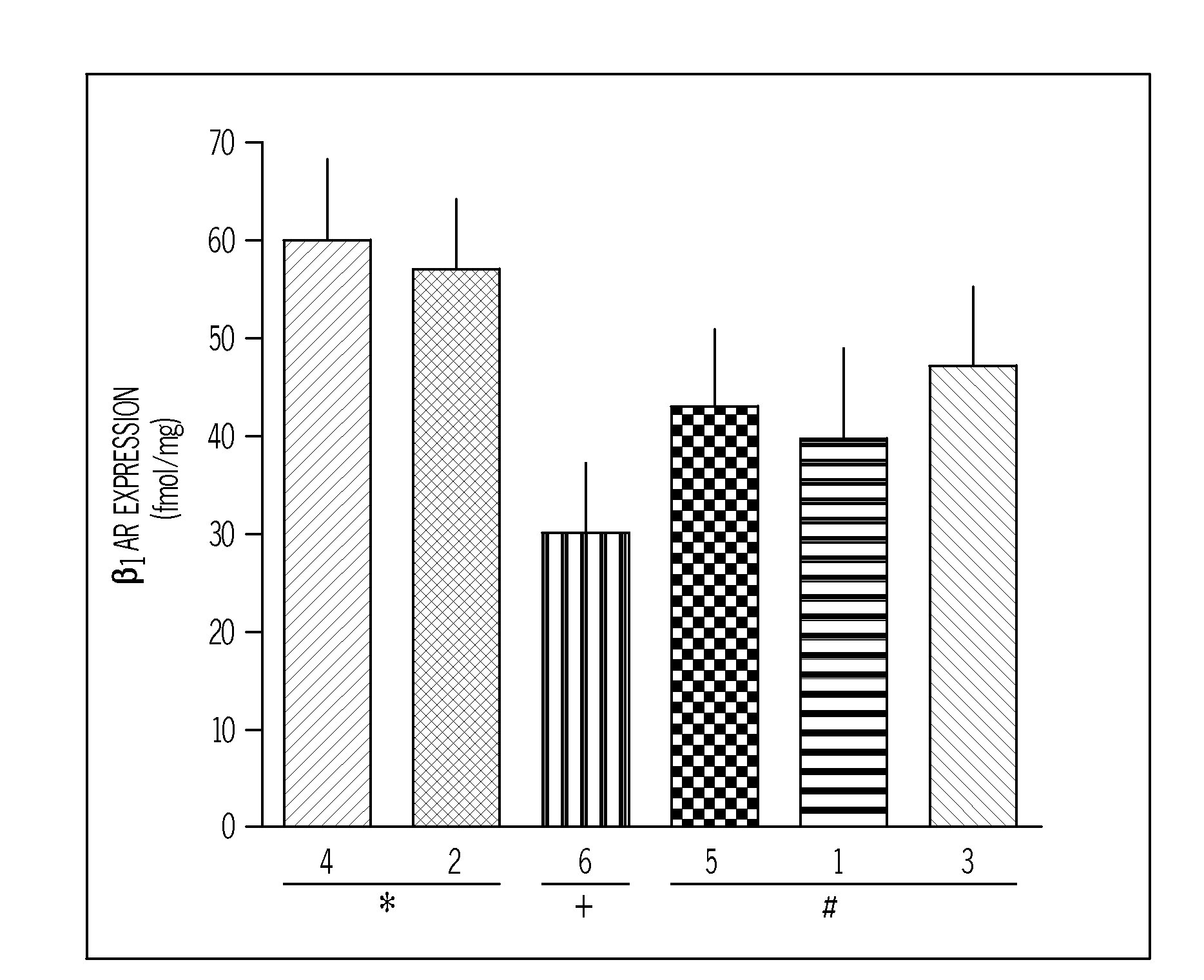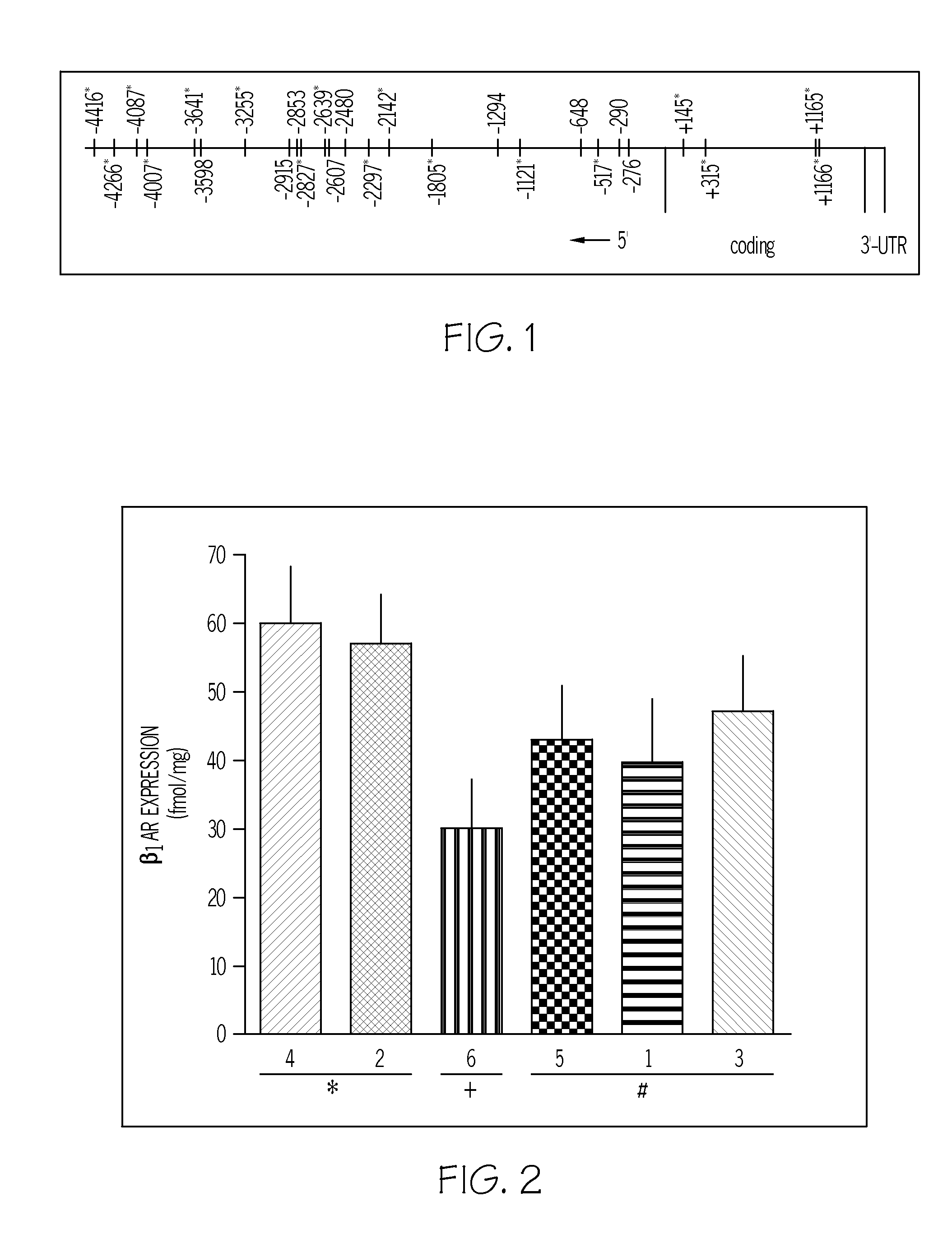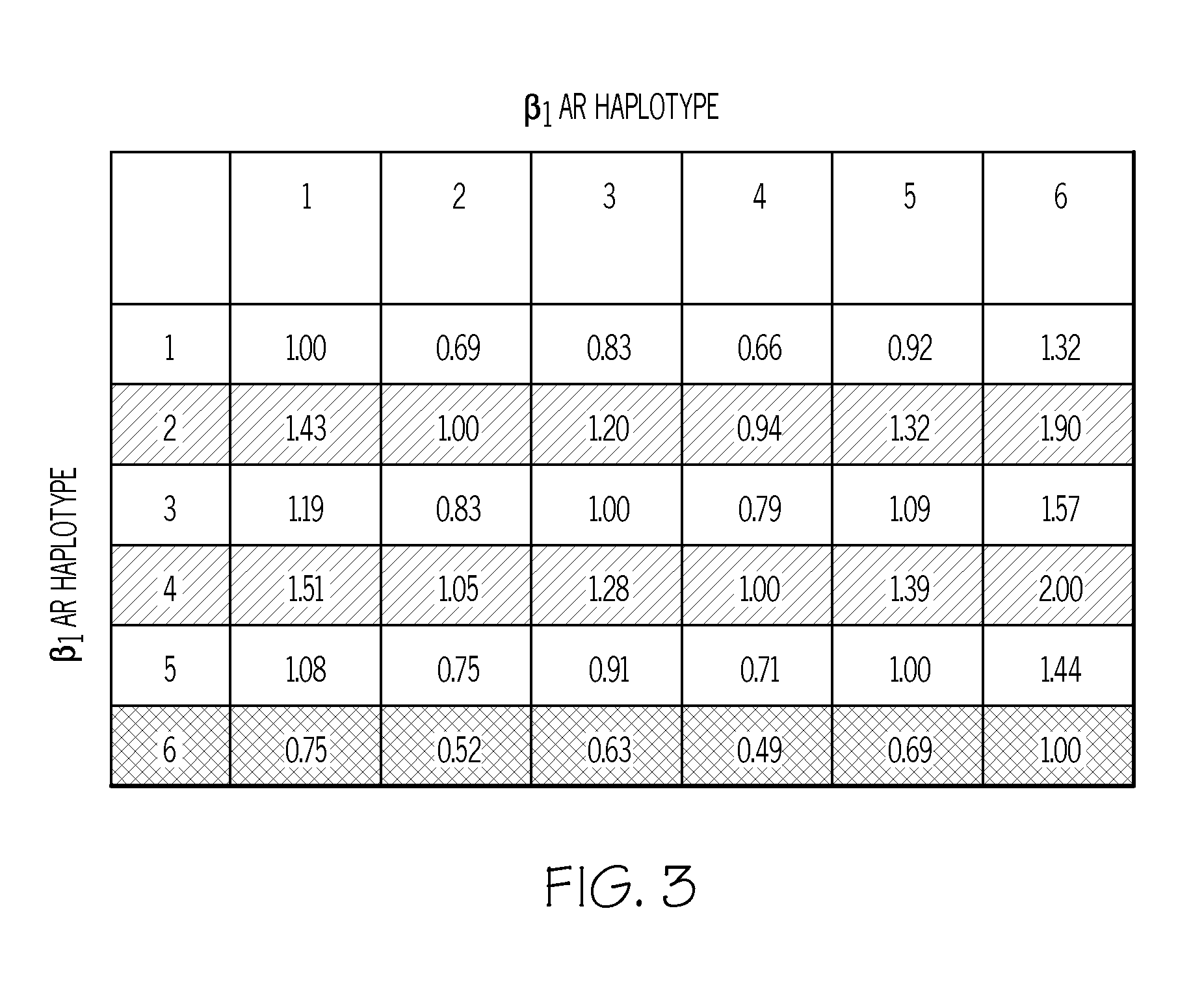Methods for Individualizing Cardiovascular Disease Treatment Protocols Based on Beta-1 Adrenergic Receptor Haplotype
- Summary
- Abstract
- Description
- Claims
- Application Information
AI Technical Summary
Benefits of technology
Problems solved by technology
Method used
Image
Examples
example 1
[0083]A blood sample is obtained from a patient in need of treatment for heart failure. Genomic DNA is isolated from leukocytes in the blood sample using phenol / chloroform precipitation techniques known in the art. The genomic DNA is used as a template for amplification of the β1AR gene or a fragment thereof by polymerase chain reaction (PCR) covering the nucleotides where there are polymorphisms that define the haplotypes. The PCR product is purified and sequenced using an automated DNA sequencer. The nucleotides at each polymorphic site are identified and the haplotype is noted to be Haplotype 2. Bucindolol, a beta blocker, is prescribed to treat the heart failure because the patient has a haplotype that predisposes to a favorable response to a treatment protocol including a beta blocker.
example 2
[0084]A patient with heart failure is receiving the beta blocker metoprolol but has complaints of frequent dizzy spells upon standing from a seated or lying position. The patient's heart rate is found to be 55 in both the lying and standing positions, and the systolic and diastolic blood pressures decrease upon standing. The physician is concerned that the dizzy spells are due to the beta blocker, but also is cognizant that administration of a beta blocker is a recognized treatment for heart failure. A blood sample is obtained from the patient. Genomic DNA is isolated from leukocytes in the blood using standard phenol / chloroform precipitation techniques. The genomic DNA is used as a template for PCR amplification of the β1AR gene or a fragment thereof covering the nucleotides where there are polymorphisms that define the haplotypes. The PCR product is purified and sequenced using an automated DNA sequencer and techniques known in the art. The nucleotides at each polymorphic site are...
example 3
[0085]A buccal swab is obtained from a patient in need of treatment for hypertension. RNA is isolated from the cells in the buccal swap sample. The RNA is translated into DNA using reverse transcriptase and methods commonly used in the art. The DNA is used as a template for PCR amplification of the β1AR gene or a fragment thereof covering the nucleotides where there are polymorphisms that define the haplotypes. The PCR product is purified and sequenced using an automated DNA sequencer. The nucleotides at each polymorphic site are identified and the haplotype is noted to be Haplotype 4. Atenolol, a beta blocker, is prescribed to treat the patient's hypertension, since the patient has a β1AR gene haplotype that predisposes to a favorable response to a treatment protocol including a beta blocker.
PUM
| Property | Measurement | Unit |
|---|---|---|
| blood pressure | aaaaa | aaaaa |
| blood pressure | aaaaa | aaaaa |
| pH | aaaaa | aaaaa |
Abstract
Description
Claims
Application Information
 Login to View More
Login to View More - R&D
- Intellectual Property
- Life Sciences
- Materials
- Tech Scout
- Unparalleled Data Quality
- Higher Quality Content
- 60% Fewer Hallucinations
Browse by: Latest US Patents, China's latest patents, Technical Efficacy Thesaurus, Application Domain, Technology Topic, Popular Technical Reports.
© 2025 PatSnap. All rights reserved.Legal|Privacy policy|Modern Slavery Act Transparency Statement|Sitemap|About US| Contact US: help@patsnap.com



